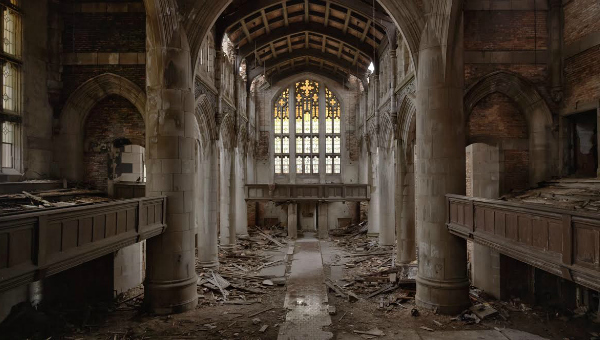 For 94 minutes, the quaintest sound of birds chirping and water gently trickling fills the auditorium. Nikolaus Geyrhalter’s anthropological essay film, HOMO SAPIENS, instils a reflective atmosphere of what it means to be human and the legacy of what we have left behind; incredibly done so without using any voices. Silence has never screamed so loudly!
For 94 minutes, the quaintest sound of birds chirping and water gently trickling fills the auditorium. Nikolaus Geyrhalter’s anthropological essay film, HOMO SAPIENS, instils a reflective atmosphere of what it means to be human and the legacy of what we have left behind; incredibly done so without using any voices. Silence has never screamed so loudly!
With no cast or dialogue, assuming you ignore the occasional un-credited bird who happens to fly across the screen, HOMO SAPIENS engages audiences for the full length of the feature. Appearing to extract aesthetics from the remarkable THE PEARL BUTTON (2016) directed by Chilean film maker Patricio Guzmán, Geyrhalter’s masterpiece offers a beautiful array of imagery of oxymoronic and enchanting stills. Shots of grass sprouted patches obscured by a broken vending machine, a tin roof bike shelter pattered by the rain, and a desolate church choked on its own dust are divided by black screens, refreshing and preparing the audience’s minds for the next image.
… a beautiful array of imagery of oxymoronic and enchanting stills …
Geyrhalter brings a grace and serenity to the atypical, searching for symmetry amid destruction in a way that at times seems to refer to Wes Anderson’s style, whilst remaining unique. HOMO SAPIENS drives the audience through an architectural and anthropological quest at the most gentlest of paces to ensure the smallest details are acknowledged and consequently reflected upon. The result is a type of film which many may view as unorthodox, but noone could argue against its splendour.
Invading the privacy of deserted locations, HOMO SAPIENS creates a cinema environment which fully realises the audiences thoughts and lucidity. Geyrhalter springboards us into creative thought with nods to human history, through a temporary focus on colosseums, ransacked schools and a crate of gas masks lost to a green forest. The very nature of film boils with the fantastical and breathtaking essence shared by Weerasethakul’s CEMETERY OF SPLENDOUR (2016).
Geyrhalter’s work suggests influence from many great anthropological films, from the absolute beauty of the Earth from Fricke’s 2012 great, SAMSARA, to the essence of humanity from Alex Garland’s EX MACHINA (2015). With the cinematography orchestrated by Geyrhalter himself, HOMO SAPIENS imbues a factual subject with a mythical aroma, haunting the cinema itself with a hypnotic silence. Taking an environmental view point, similar to that of Studio Ghibli’s LAPUTA: CASTLE IN THE SKY (1986) and PRINCESS MONONOKE (1997) both of which directed by Hayao Miyazaki, the film strengthens the importance of man’s influence on the Earth whilst appropriating the role the environment plays in each of the scenes. As the Ecclesiastes say: “And all things go to one place: of earth they were made, and into earth they return together”. HOMO SAPIENS will take you on reflective journey that encourages you to relish your inner thoughts, and contemplate what it really means to be human.
httpvh://www.youtube.com/watch?v=kOOGaT5iwgY

